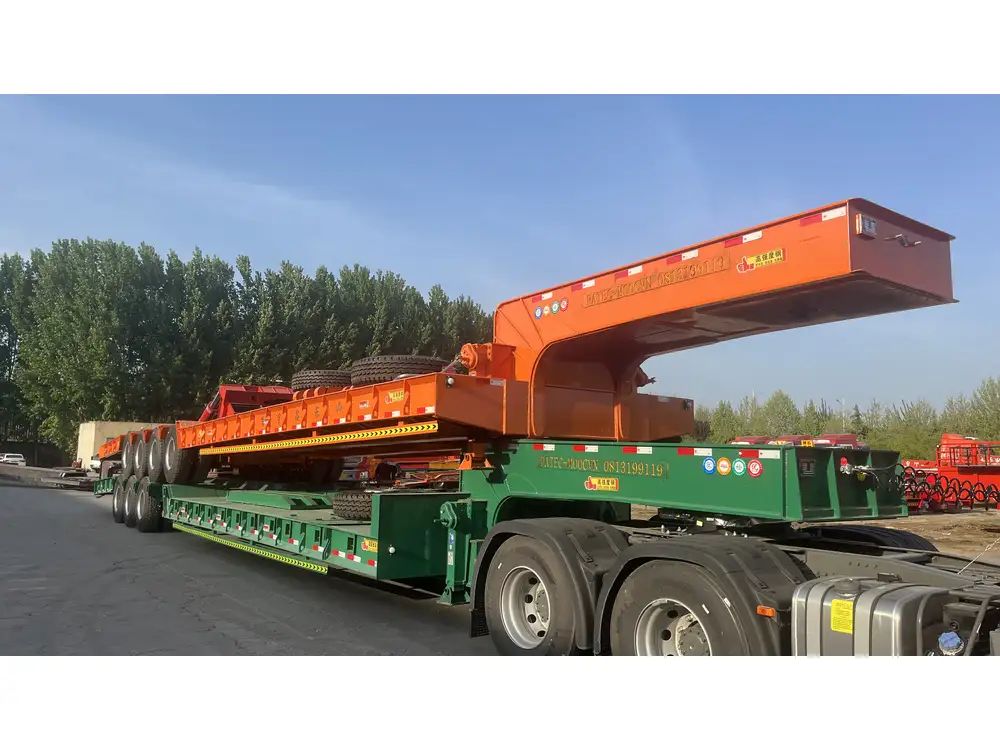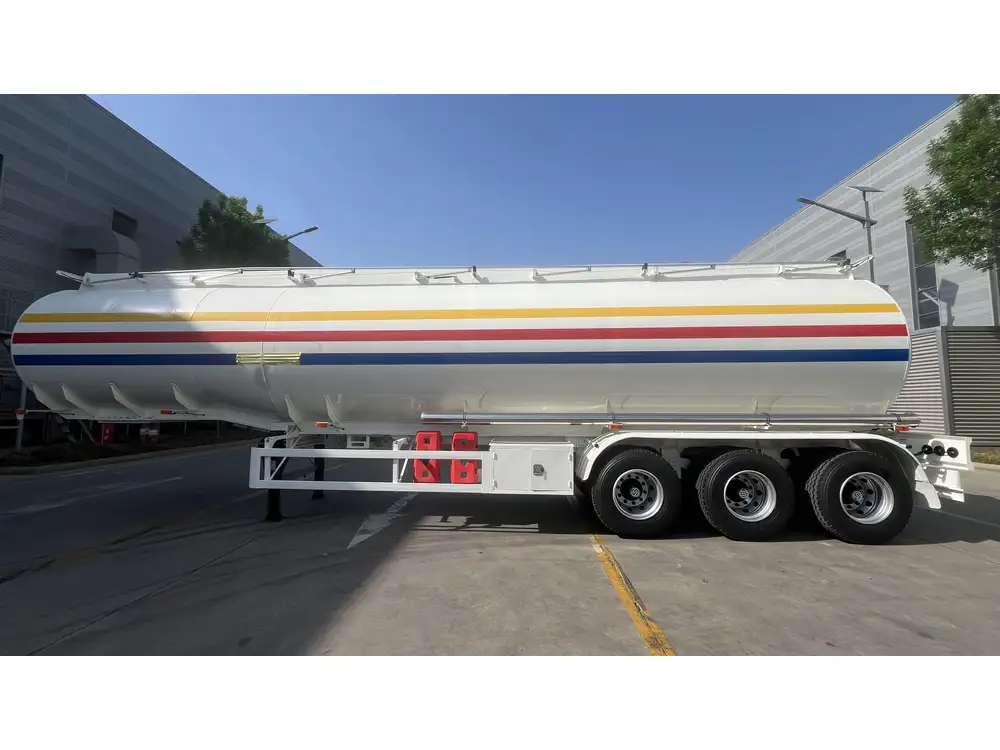When it comes to transporting cargo across vast distances, semi-trailers play an irreplaceable role, especially flatbed trailers. Among various questions, many users ask: “How wide is a typical flatbed trailer?” This article serves to enhance your comprehension of flatbed trailer dimensions, applications, and important features, while also addressing related queries that often arise in this context.
What is a Flatbed Trailer?
Flatbed trailers are designed with a flat, level platform and no sides or roof. This design allows for the transportation of oversized and heavy loads that wouldn’t fit into standard enclosed trailers. The lack of a confined structure makes loading and unloading extremely flexible, accommodating various cargo shapes and sizes, from lumber to heavy machinery.
General Dimensions of Flatbed Trailers
In the world of flatbed trailers, width plays a pivotal role. Knowing the standard measurements helps in compliance with road regulations and makes choosing the right trailer for your needs easier.
| Flatbed Type | Typical Width | Length Variants |
|---|---|---|
| Standard Flatbed Trailer | 8.5 feet | 20, 24, 30, 40, 48, 53 feet |
| Step Deck or Drop Deck Trailer | 8.5 feet | 40, 45, 48, 53 feet |
| Expandable Flatbed Trailer | Up to 12 feet | Usually 48, 53 feet before expansion |
| Lowboy Trailer | 8.5 feet | 40, 45, 48, 53 feet |

Standard Width Specifications
The standard width for most flatbed trailers is 8.5 feet (which is approximately 102 inches). This measurement is important for both safety and legislative compliance. Anything wider than this may require special permits and may be subject to additional regulations concerning transport.
Variability in Width
As tailors or manufacturers, we recognize that different types of flatbed trailers may come with unique width specifications. For instance, lowboy trailers, which are specifically designed for transporting heavy equipment, also adhere to the standard width of 8.5 feet but are designed to offer extra height. However, in scenarios where cargo exceeds the maximum width, trailers may incorporate sliding mechanisms that allow for temporary extensions of the sides (e.g., expandable flatbeds) to maximize load potential while remaining within legal limitations.
The Importance of Width in Flatbed Trailers
Understanding the width of a flatbed trailer is crucial for several reasons:

1. Load Capacity and Stability
The width impacts how weight is distributed across the trailer. A wider base can lead to better stability, particularly when carrying heavy or uneven loads.
2. Regulatory Compliance
Transporting cargo that exceeds 8.5 feet in width requires special permits. Knowledge about the exact dimensions allows for compliance with state regulations and helps avoid hefty fines.
3. Loading and Unloading Efficiency
Properly dimensioned trailers facilitate easier loading and unloading logistics, especially when using cranes or forklifts.

Types of Flatbed Trailers and Their Widths
Flatbed trailers come in various designs, each suited for different transportation needs. Here’s a breakdown of several types, including their widths and typical applications.
Standard Flatbed Trailers
- Width: 8.5 feet
- Length: Usually ranges between 20-53 feet.
- Application: Used for general freight, building materials, and machinery.
Step Deck Trailers
- Width: 8.5 feet
- Height: Offers a lower deck height, generally 18 inches.
- Application: Ideal for transporting taller cargo without exceeding height restrictions on the road.

Expandable Flatbed Trailers
- Width: Can extend to 12 feet using specialized adjustments.
- Application: Used for hauling oversized materials like large machinery or piping.
Lowboy Trailers
- Width: Stays consistent at 8.5 feet.
- Height: Designed to carry oversized equipment with a lower deck height of around 18 inches.
- Application: Commonly utilized for heavy machinery, allowing for secure transport across various terrains.
Factors Influencing the Selection of Flatbed Trailers
When considering flatbed trailers for your transportation needs, it is essential to evaluate multiple aspects beyond just width. Here are the critical factors:

Cargo Type
The nature of the cargo predominantly governs the trailer type and dimensions. For example, transporting steel beams compares significantly to transporting vehicles; each necessitates distinct loading strategies, safety equipment, and potentially different flatbed configurations.
Load Height and Weight
Understanding the combined height and weight of your cargo is crucial in selecting the right flatbed trailer. Ensure logistical constraints surrounding maximum height and weight loads for transportation are thoroughly evaluated.
Regional Regulations
Regulatory compliance not only concerns width but also weight limits, cabin height, and even lengths of trucks and trailers. Familiarize yourself thoroughly with state and federal regulations concerning trailer dimensions to avoid delays.

Intended Route
The planned transportation route can profoundly influence the size of the trailer desired. Choose your width and length specifications based on whether your route involves rural roads, highways, or construction sites—each of which may handle oversized trailers differently.
Flatbed Trailer Accessories
The appropriate accessories can greatly enhance the functionality of your flatbed trailer. Here’s a quick rundown of useful additions:
| Accessory | Purpose |
|---|---|
| Tarps | Protects cargo from weather elements |
| Tie-downs | Secures cargo during transit |
| Side racks | Supports taller loads to prevent shifting |
| Removable stakes | Allows flexibility in loading configurations |
| Load bars | Prevents cargo from sliding off the trailer |
Safety Considerations for Flatbed Trailers
When operating flatbed trailers, adhering to safety protocols can mitigate potential risks. Key safety considerations include:

Proper Loading Techniques
Ensure that the load is evenly distributed to avoid tipping. Uneven weight can create instabilities while in motion, potentially leading to accidents.
Regular Inspections
Conduct regular inspections of the trailer’s components, such as tires, brakes, and tie-downs, ensuring that they are in optimal condition.
Training for Operators
Ensure that all operators are trained in best practices for handling and transporting loads using flatbed trailers.

Weather Monitoring
Be mindful of weather conditions. Rain, snow, and ice can significantly affect driving and loading conditions. Secure your load adequately in varying weather.
Conclusion: Making Informed Decisions
Understanding flatbed trailer dimensions, especially how wide a typical model is, is crucial for enhancing transport efficiency. By evaluating various factors—cargo type, regulatory compliance, intended use, and the various types of flatbed trailers—decision-making becomes more informed and strategic.
With the accompanying knowledge regarding accessories and safety measures, businesses can enhance their operational efficiency while ensuring compliance with regulations. Thus, whether it’s standard, step deck, expandable, or lowboy trailers you are investigating, ample information guides you towards making the right choice and mastering the art of trailer transport.
Feel free to reach out for additional resources or inquiries regarding flatbed trailers. Your transportation needs deserve precise solutions tailored to maximize safety, efficiency, and compliance on the roads ahead.



